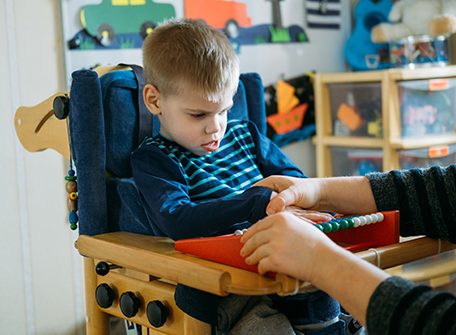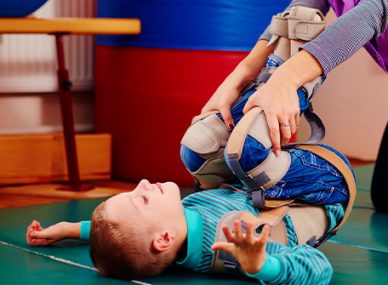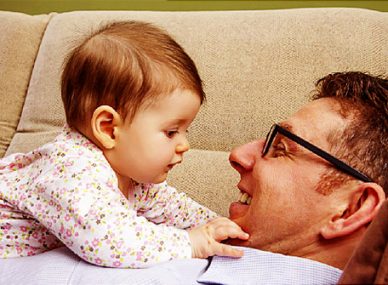One of the most prevalent developmental disabilities is cerebral palsy (CP). The term “CP” refers to a group of neurological illnesses with mobility and posture problems that limit activities and are thought to be caused by a static disruption in the growing brain. These disorders are frequently accompanied by secondary health issues and associated limitations.
What Are The Issues A Child May Experience With Cerebral Palsy?
CP comprises abnormalities in a variety of motor activities, including but not limited to body movement, muscle control, coordination, tone, reflex, fine motor skills, gross motor skills, oral motor functioning, posture, and balance. CP is not a single diseased entity.
Patients with cerebral palsy exhibit mental health issues, developmental delays, and incorrect joint alignment brought on by muscle stiffness. In the end, this causes excruciating degenerative bone disease. Physiotherapy and cell therapy for cerebral palsy aid in the long-term management of the severe symptoms.
Communication and learning difficulties, aberrant muscle tone, spasticity, ataxia, dystonia, dyskinetic, athetosis, and issues like joint contractures and hip dislocation are all common in children with cerebral palsy. Physical therapy, often known as physiotherapy, aids in easing joint discomfort, reducing muscular stiffness, and enhancing movement.
Cerebral palsy cannot be cured at this time, however, there are treatments that can assist affected individuals to lead as active and independent a life as possible.
Physiotherapy For Cerebral Palsy
Exercises used in physiotherapy are intended to preserve and, ideally, enhance movement. When looking for the best solution for CP child physiotherapy, you must look for a group of medical professionals who specialize in treating people with the illness who will collaborate with you to develop a treatment plan for both children and adults. This strategy will be reviewed frequently as the person’s needs change. People with cerebral palsy may require different care and support as they age.
Physiotherapy Offers The Following Benefits-
- Promote movement
- Stop muscles from contracting, which can be unpleasant and impact how the bones and muscles grow.
- Enhance strength and stop muscles from becoming weak.
- If necessary, a physiotherapist may also offer advice on the arm or leg braces known as orthoses to support the limbs, as well as walking aids (such as a walking frame or walking sticks).
How Can Physiotherapy Help A Child With Cerebral Palsy?
Physiotherapy assists those who have cerebral palsy in developing their motor skills and halting the progression of additional motor issues. Patients with cerebral palsy can experience greater independence with the support of physiotherapists using the right exercises, heat therapy, massages, pressure, and equipment. To provide patients the best opportunity of recovering their abilities in severe circumstances, physiotherapy functions best in conjunction with other treatments.
A physiotherapist creates a therapy plan based on the patient’s mobility problems. These cerebral palsy mobility difficulties are restricted to:
- One half of the body (hemiplegia)
- All four limbs (quadriplegia)
- The legs (diplegia)
For each of the aforementioned problems, therapists recommend specific exercises to help the affected parts restore movement.
What Are The Types Of Physiotherapy Exercises For Cerebral Palsy?
Physiotherapy provides advantages for several types of cerebral palsy, including:
Spastic: Using activities like stretching to ease joint and muscular stiffness, physiotherapy helps people with spastic cerebral palsy lessen muscle tension and bouncy motions.
Ataxic: Through specialized exercises, physical therapy helps patients with the ataxic kind of cerebral palsy improve their body posture and balance.
Physiotherapists use walking aids or orthotic devices including braces, splints, casts, and shoe inserts to assist patients to stand up straighter and improve their posture.
What Part do Parents or other Caregivers Play In Physical Therapy?
The success of physiotherapy is crucially dependent on the involvement of parents and guardians. A child’s support network is primarily made up of their family and friends. Physical therapists collaborate closely with parents, guardians, and other caregivers, teaching them how to ensure that the kid can carry out the recommended exercises correctly.
Exercise and daily activities should be accompanied by frequent parental engagement and encouragement.
Conclusion
Hope AMC is one of the premier pediatric rehabilitation centers that offer highly customized child physiotherapy programs in Dubai. These therapies are designed for children with cerebral palsy or other neurological disorders. If you have a child with cerebral palsy, don’t wait!
Bring your child to our expert physiotherapists. We will identify the specific needs of your child and devise a therapy plan to suit his needs.




